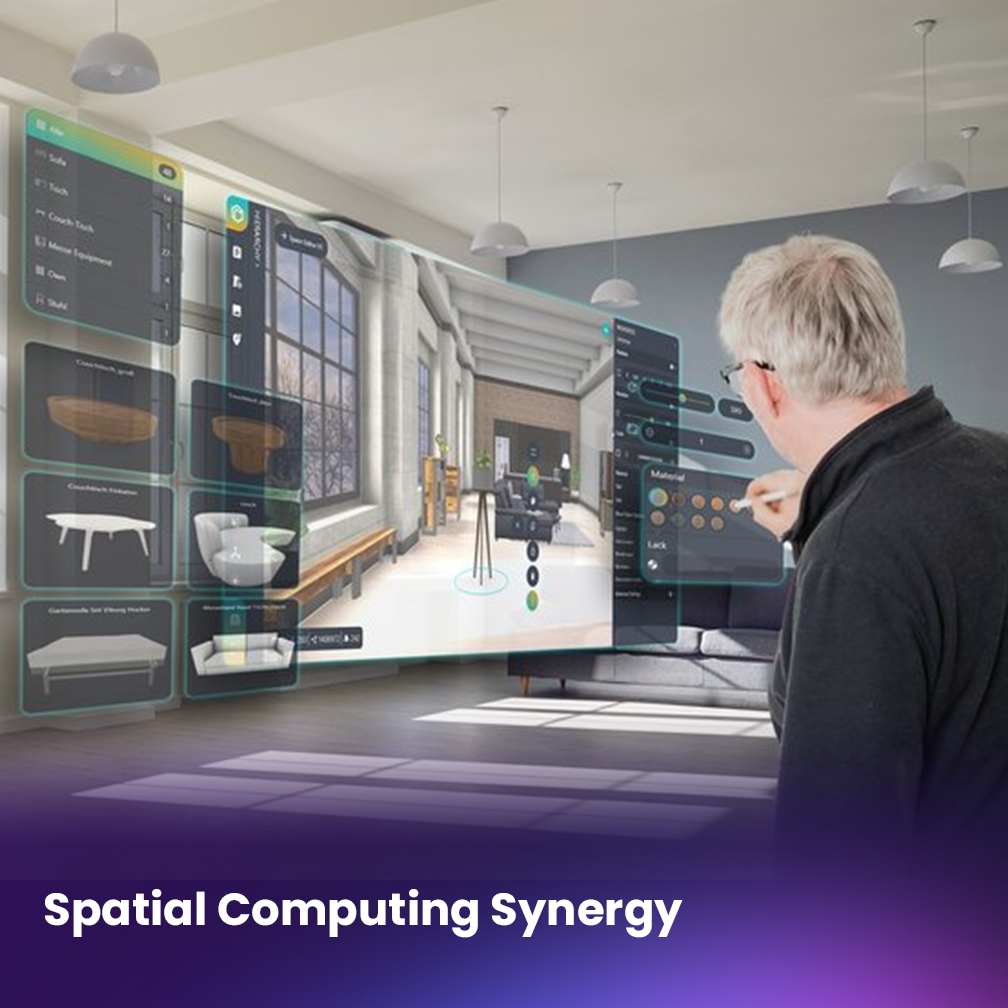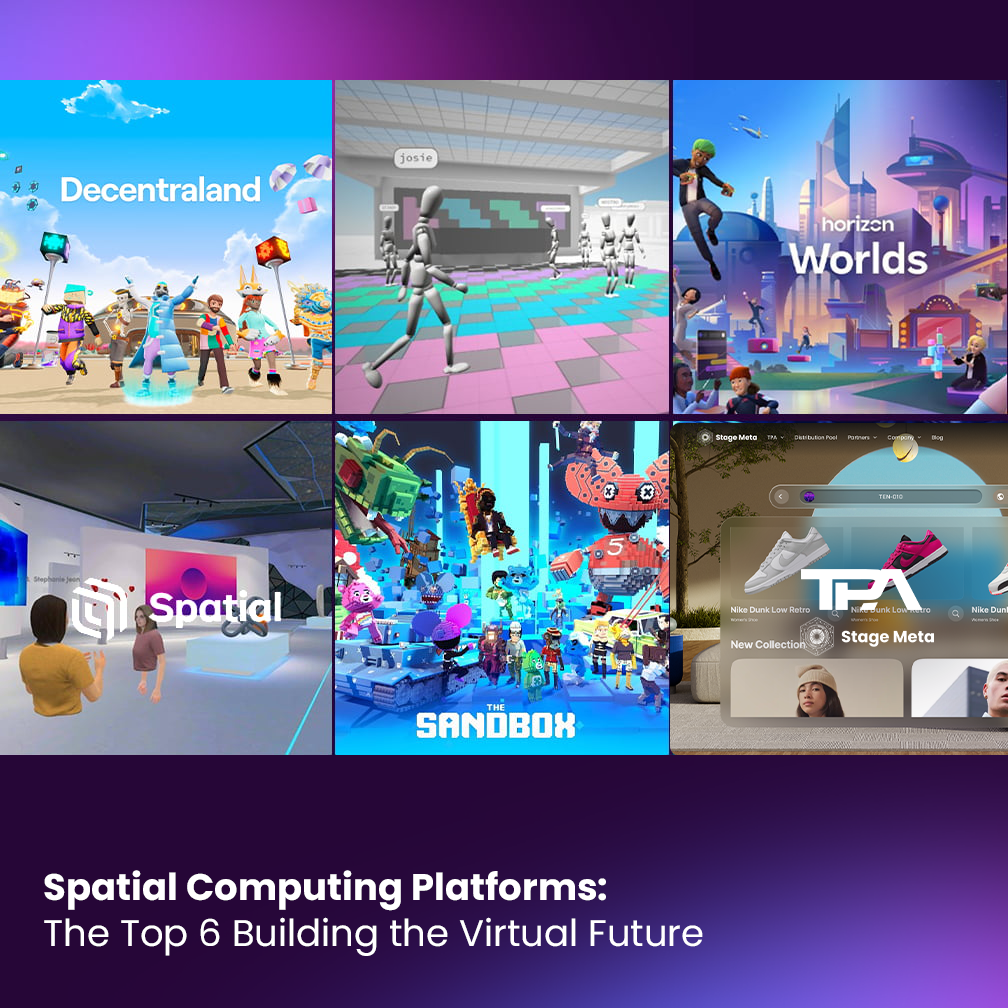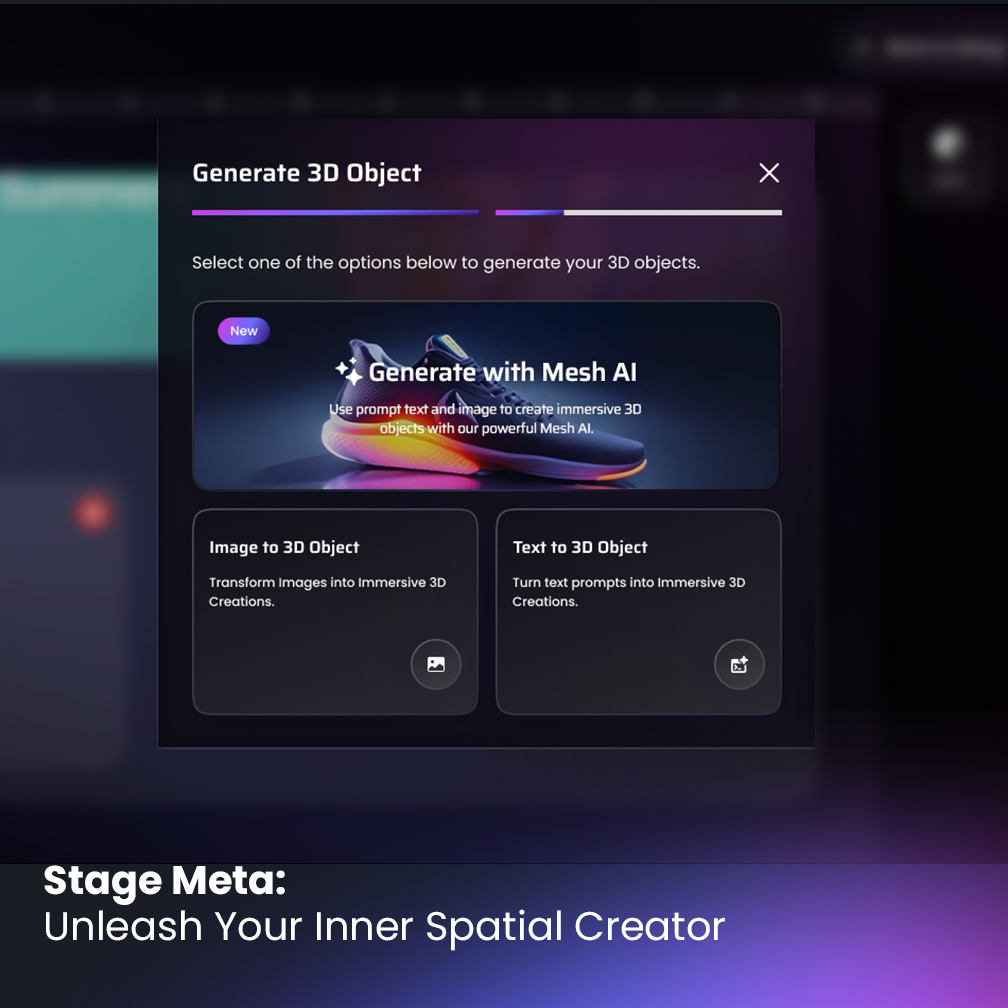Spatial Computing Synergy: Unity, Microsoft 365, TPA, and Stage Meta on Apple Vision Pro

Table of contents
- Introduction
- Unity and Microsoft 365: Pioneering Spatial Experiences
- TPA and Stage Meta: Innovating Spatial Computing
- Apple Vision Pro: A New Chapter Begins
- Looking Ahead: The Potential of Spatial Computing
- Conclusion
- FAQs
- What is Spatial Computing and How is it Transforming the Digital Landscape?
- How are Unity and Microsoft 365 Contributing to Spatial Computing on Apple Vision Pro?
- What is the Teleport Plaque Address (TPA) and How Does it Innovate Spatial Computing?
- What is Stage Meta and How Does it Work with TPA?
- What Can We Expect from the Release of Apple Vision Pro?
- How Will the Convergence of These Technologies Impact the Future?
- What are the Potential Applications of Spatial Computing in Professional Settings?
Introduction
Spatial computing is transforming our digital interactions. Indeed, it’s redefining platforms like Unity and Microsoft 365, thanks to Apple Vision Pro’s innovation. Moreover, it introduces cutting-edge technologies such as Teleport Plaque Address (TPA) and Stage Meta. Consequently, this era signifies a major shift, highlighting spatial computing’s vast potential. Thus, exploring the roles of TPA and Stage Meta is crucial.
These innovations spearhead this evolution, notably with Apple Vision Pro’s anticipated release this Friday, February 2nd. Moreover, their impact in reshaping digital interactions emphasizes the urgency of adopting these technologies. Importantly, this initiative not only elevates user experiences but also paves the way for creative and technological breakthroughs. Consequently, it unveils the broad possibilities spatial computing offers, promising a future rich in innovation.

Unity and Microsoft 365: Pioneering Spatial Experiences
Unity’s collaboration with Apple Vision Pro and the integration of Microsoft 365 signifies a leap in spatial computing. Consequently, they offer immersive experiences, blending digital with physical realms and enhancing productivity. Additionally, these advancements facilitate intuitive digital interactions, revolutionizing engagement across various sectors. Therefore, this partnership represents a pivotal moment, demonstrating spatial computing’s potential to transform our interactions with both digital and physical worlds.
Unity’s Leap into Spatial App Development for Apple Vision Pro
Unity has eagerly embraced the opportunities that Apple Vision Pro presents. Indeed, with tools specifically designed for spatial app development, Unity empowers developers to create immersive experiences. Consequently, this initiative significantly enriches the mixed reality landscape. Furthermore, it highlights the transformative potential of spatial computing, promising a future with richer digital interactions. As a result, developers now have the means to innovate like never before. Moreover, this movement towards spatial computing opens up new horizons for creative exploration. Therefore, Unity’s strategic approach not only amplifies the capabilities within mixed reality but also sets a new benchmark for what is achievable in digital environments.
Key Highlights:
- Unity’s support for VisionOS allows for a range of spatial experiences, including immersive mixed reality, ports of VR games, and 2D content adaptation.
- The platform’s cross-compatibility and robust XR tools facilitate a smooth transition of existing mobile and XR apps to VisionOS.
- Unity’s initiative empowers developers to explore innovative spatial computing applications, enhancing user interaction within digital spaces.

Microsoft 365 on Apple Vision Pro: A New Dimension of Productivity
Microsoft 365 apps’ availability on Apple Vision Pro marks a pivotal moment for productivity tools within spatial computing. Indeed, this integration revolutionizes our engagement with Microsoft apps, ushering in an immersive experience. Consequently, it signifies a significant leap in the use of digital tools. Furthermore, it enriches the approach to digital content in spatial computing, thereby enhancing productivity. Additionally, this development showcases the seamless blend of productivity and innovation. As a result, users can enjoy a more intuitive and engaging interaction with their digital workspace. Therefore, integration not only boosts productivity but also opens new avenues for creative content manipulation. Moreover, it positions Microsoft 365 at the forefront of spatial computing’s evolving landscape, promising a future where digital interactions are more dynamic and user-centric.
Integration Impact:
- Microsoft 365 on Apple Vision Pro redefines the workspace, enabling collaboration and interaction with data in a spatial context.
- This synergy of productivity and innovation paves the way for new forms of content creation and data manipulation, leveraging the strengths of spatial computing.

TPA and Stage Meta: Innovating Spatial Computing
TPA and Stage Meta signify a transformative shift in spatial computing. Indeed, TPA, as a unique address system, greatly simplifies navigation across digital and physical spaces. Consequently, it renders Spatial Computing more accessible and intuitive for users. Furthermore, this development underscores a pivotal advancement in digital navigation techniques. Additionally, by making spatial computing environments easier to navigate, TPA enhances user experiences. As a result, engaging with digital content becomes a more seamless and efficient process.
Therefore, the introduction of TPA and Stage Meta not only marks a milestone in spatial computing but also promises a future where digital and physical realms are more closely integrated. Moreover, this integration fosters a user-friendly digital environment, encouraging wider adoption and innovation in spatial computing. Ultimately, TPA and Stage Meta are leading the way in redefining how we interact with digital spaces, making them more navigable and meaningful for everyday users.
Stage Meta: A Spatial Computing Platform
Stage Meta, leveraging TPA, emerges as a groundbreaking platform in spatial computing, centered on enhancing user experience. Indeed, it seamlessly integrates virtual and physical realms, thus boosting the accessibility and engagement within Spatial Computing. Consequently, this platform showcases the transformative potential of spatial computing, positioning it as a crucial catalyst for progress. Furthermore, by blending these worlds, Stage Meta simplifies interactions within spatial environments. As a result, users find navigating these complex spaces more intuitive and straightforward.
Therefore, Stage Meta not only elevates user engagement but also broadens the scope of spatial computing applications. Moreover, this fusion of virtual and physical realities underlines the innovative approach of Stage Meta, encouraging further exploration and development in this field. Ultimately, Stage Meta, through its use of TPA, redefines the boundaries of digital interaction, offering a more immersive and user-centric experience. This advancement signals a significant leap forward in making spatial computing a mainstay in digital technology.
Apple Vision Pro: A New Chapter Begins
The launch of Apple Vision Pro heralds a new era in Spatial Computing. Indeed, by supporting Unity, Microsoft 365, TPA, and Stage Meta, it significantly enhances the global user experience in spatial computing. Consequently, this move underscores Apple’s deep commitment to innovation, notably improving spatial computing’s functionality and accessibility. Furthermore, this development marks a pivotal shift towards more immersive and intuitive digital interactions. As a result, users can now enjoy a richer and more seamless experience across various platforms.
Therefore, Apple Vision Pro not only propels spatial computing forward but also sets a new standard for digital excellence. Moreover, this launch is a testament to Apple’s vision of a future where technology and user experience converge in unprecedented ways. Ultimately, Apple Vision Pro, with its robust support for leading technologies, is reshaping the landscape of spatial computing, promising a future where digital environments are more accessible and engaging for everyone. This advancement showcases a significant leap in how we interact with digital content, making spatial computing a more integral part of our daily lives.
Looking Ahead: The Potential of Spatial Computing
The synergy of Unity, Microsoft 365, TPA, Stage Meta, and Apple Vision Pro heralds a promising future. It signifies a digital interaction paradigm shift, opening a new era with boundless potential for creativity, efficiency, and technological progress.
- Wider Technology Adoption: More industries are adopting spatial computing for various applications, from gaming to professional tools.
- Innovative User Experiences: The creation of unique, immersive experiences that revolutionize how we interact with digital content and services.
Conclusion
The integration of these technologies represents not just a technological advancement but a paradigm shift in digital interaction. As we step into this new era with the launch of Apple Vision Pro, the possibilities for creativity, efficiency, and technological advancement in spatial computing are boundless.
FAQs
What is Spatial Computing and How is it Transforming the Digital Landscape?
Spatial computing refers to technology that enables human-computer interactions in three-dimensional spaces, integrating digital and physical realms. It’s reshaping the digital landscape by providing immersive experiences through platforms like Unity and Microsoft 365 on Apple Vision Pro, and innovative technologies like Teleport Plaque Address (TPA) and Stage Meta.
How are Unity and Microsoft 365 Contributing to Spatial Computing on Apple Vision Pro?
Unity offers a toolset for developing spatial apps on Apple Vision Pro, allowing for immersive mixed reality experiences and the adaptation of existing VR games and 2D content. Microsoft 365’s integration brings productivity tools into this spatial environment, enhancing collaboration and data interaction in a more intuitive and immersive way.
What is the Teleport Plaque Address (TPA) and How Does it Innovate Spatial Computing?
TPA is a unique address system designed for the spatial computing era. It uses a unique combination of letters and numbers to create easy-to-remember addresses, revolutionizing navigation and interaction within digital and physical spaces.
What is Stage Meta and How Does it Work with TPA?
Stage Meta is a spatial computing platform that utilizes TPA technology. It allows users to create, sell, trade, and develop TPAs, merging virtual and physical realms. This platform facilitates seamless integration of spatial computing into daily digital interactions.
What Can We Expect from the Release of Apple Vision Pro?
The release of Apple Vision Pro, set for February 2nd in Apple stores, marks a new chapter in spatial computing. It brings an immersive platform that’s compatible with Unity, Microsoft 365, TPA, and Stage Meta, offering a leap forward in how spatial computing will be experienced by users.
How Will the Convergence of These Technologies Impact the Future?
The convergence of Unity, Microsoft 365, TPA, Stage Meta, and Apple Vision Pro is expected to lead to broader technology adoption across various industries and the creation of innovative, immersive user experiences. It represents a paradigm shift in digital interaction and opens up boundless possibilities in spatial computing.
What are the Potential Applications of Spatial Computing in Professional Settings?
Spatial computing has vast potential in professional settings, including immersive training environments, enhanced remote collaboration, and innovative approaches to design and visualization. It can transform industries such as healthcare, education, and engineering with more interactive and engaging methods.
Estimated reading time: 8 minutes
- How to Buy TPA (Teleport Plaque Address) Ownership Benefits. A Comprehensive Guide.
- TPA and Apple Vision Pro: Revolutionizing Spatial Computing
- Spatial Computing Technology in 2024: Current Landscape
- Spatial Computing: The Future is Now?
- Spatial Computing Trends: Buckle Up for a Wild Ride this 2023!
Related posts:
 Unique Address: Revolutionizing Spatial Computing with TPA (Teleport Plaque Address)
Unique Address: Revolutionizing Spatial Computing with TPA (Teleport Plaque Address)
 Spatial Computing Platforms: The Top 6 Building the Virtual Future
Spatial Computing Platforms: The Top 6 Building the Virtual Future
 Discovering What is the Best TPA: A Comprehensive Guide to Premium Teleport Plaque Address
Discovering What is the Best TPA: A Comprehensive Guide to Premium Teleport Plaque Address
 Stage Meta: Unleash Your Inner Spatial Creator – No Code Required!
Stage Meta: Unleash Your Inner Spatial Creator – No Code Required!




